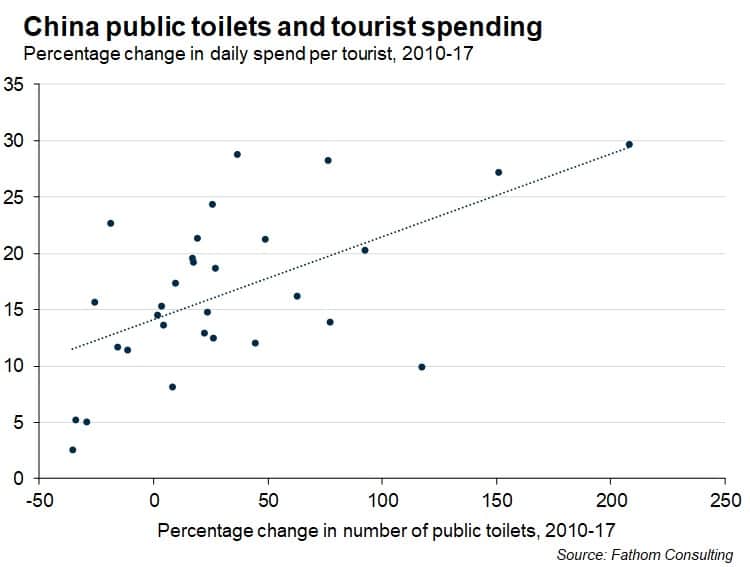A sideways look at economics
I may be taking a risk in writing this blog, as toilet humour is usually one of the things to steer well clear of in the workplace. On the other hand, it is the oldest and one of the most universal forms of comedy. And, given the wealth of extremely detailed (and perhaps overly revealing) data available to economists these days, I think it’s not surprising that some more bizarre topics will occasionally come up for discussion.
Looking past the slightly awkward nature of the subject, toilets are quite a topical subject for economists. Access to adequate sanitation is enshrined in the UN’s Sustainable Development Goals and lack thereof can have severe health consequences in least developed countries. While access to such basic needs isn’t a concern for us in developed countries, most people will probably have realised we can’t always take access to (tolerably clean) toilets for granted when we’re out in public or on holiday abroad.
In developing countries, improving access to public toilets can play a role in advancing the economy, for instance by creating a more welcoming environment for foreign tourists. In fact, in 2015 China’s president Xi Jinping announced a “toilet revolution” to tackle the country’s reputation for uncouth public lavatories and encourage tourist inflows. The Chinese promptly put their experience in boosting economic growth through public infrastructure spending to good use and increased the number of public restrooms by nearly one-fifth between 2014 and 2018 — including some that are far from bog-standard and look like they could almost be tourist attractions in their own right.

As the chart above shows, the new policy seems to have helped; in those Chinese provinces where toilet access was improved the most, revenues per tourist were boosted too. Happier and more comfortable guests seem willing to spend more. Of course, this is no guarantee of the direction of causality. It’s possible that those areas where tourists have spent more (for reasons other than toilets) have used those revenues to invest in better facilities for their visitors.
There may be lessons to be learned for advanced economies, too. In the UK, the severe decline in the provision of public loos has drawn attention. The issue is most concerning for vulnerable groups such as disabled or elderly persons, but really nobody fancies the prospect of being caught short while out in public. Could the worry of having nowhere to go when nature calls be turning people off from going out, and even be playing a role in the well-documented and oft-lamented demise of the British high street? Among the benefits of online shopping relative to traditional shops is not having to leave the comforts of home behind — you could even go as far as browsing Amazon and co. while on the throne. Making high streets and bricks and mortar shops more attractive destinations surely involves improving the quality of public amenities. And patrons in pubs or restaurants might be willing to spend more on drink if they needn’t fear having a sudden urge on the way home.
Toilets are unlikely to be the primary cause or solution to falling high street footfall but could still be a piece of this puzzle. And before you ask — no, I didn’t come up with the idea for this blog during a pensive toilet break, although it may have made for some (hopefully interesting) bathroom reading for some readers.